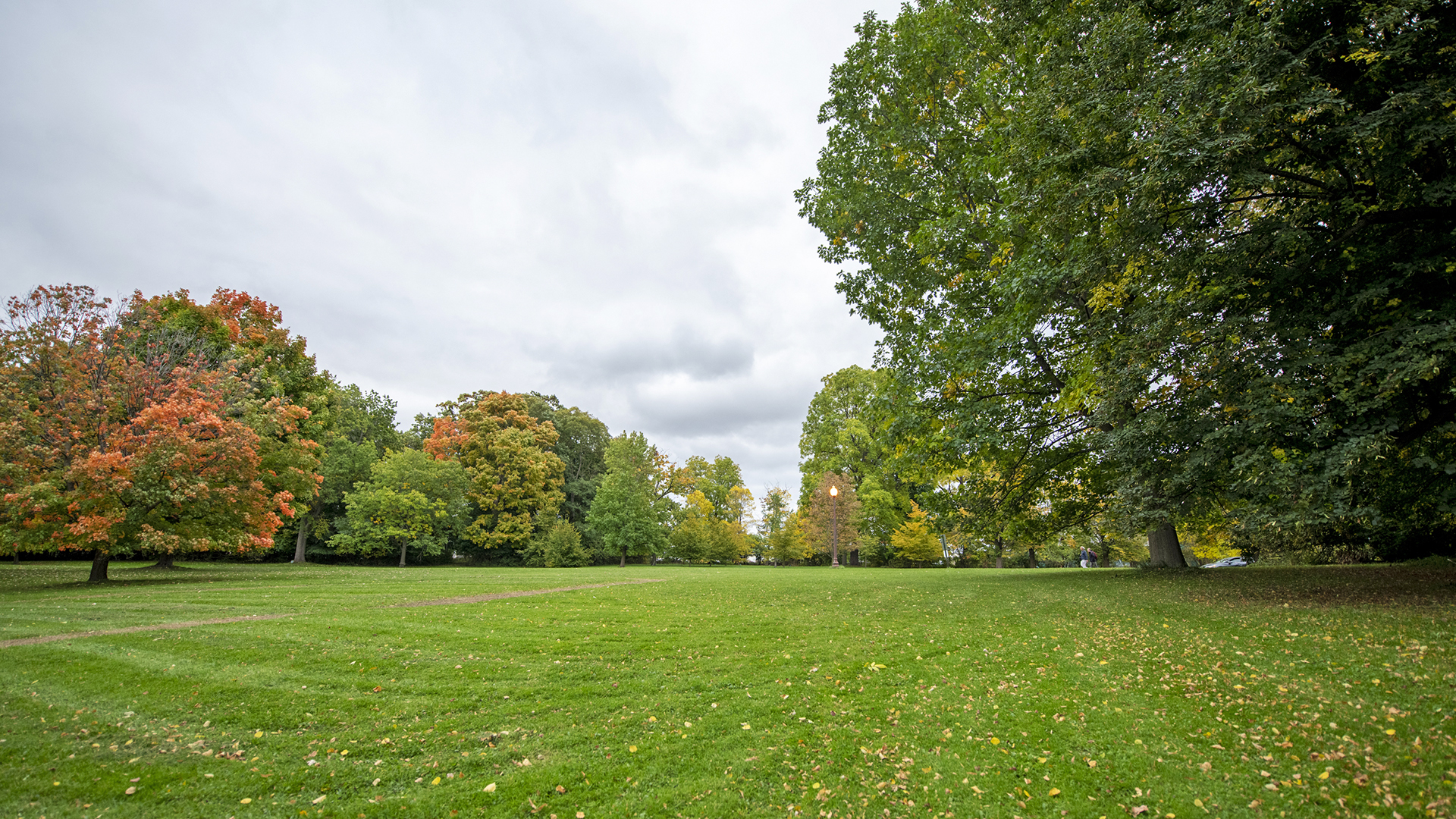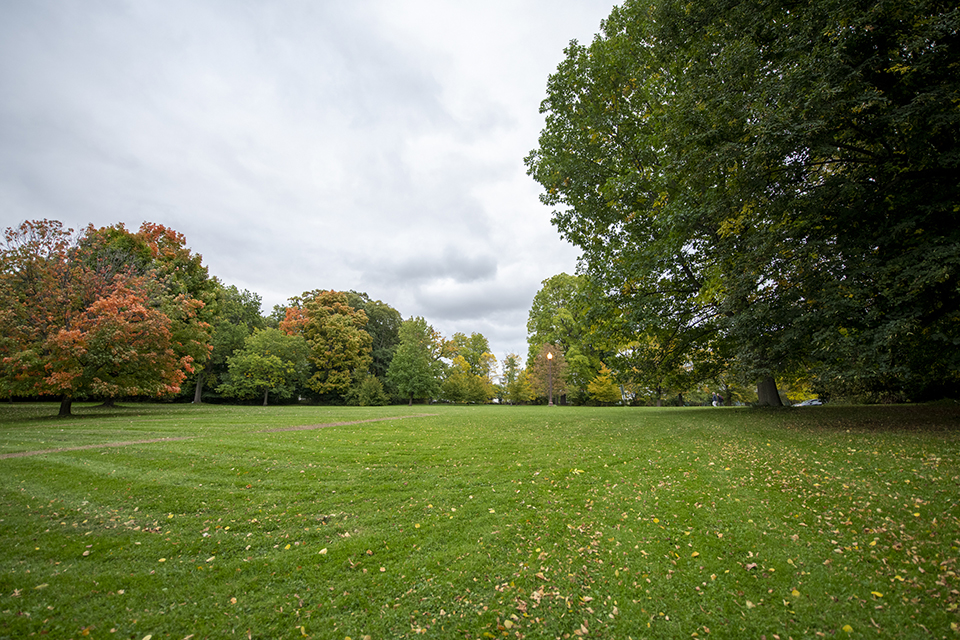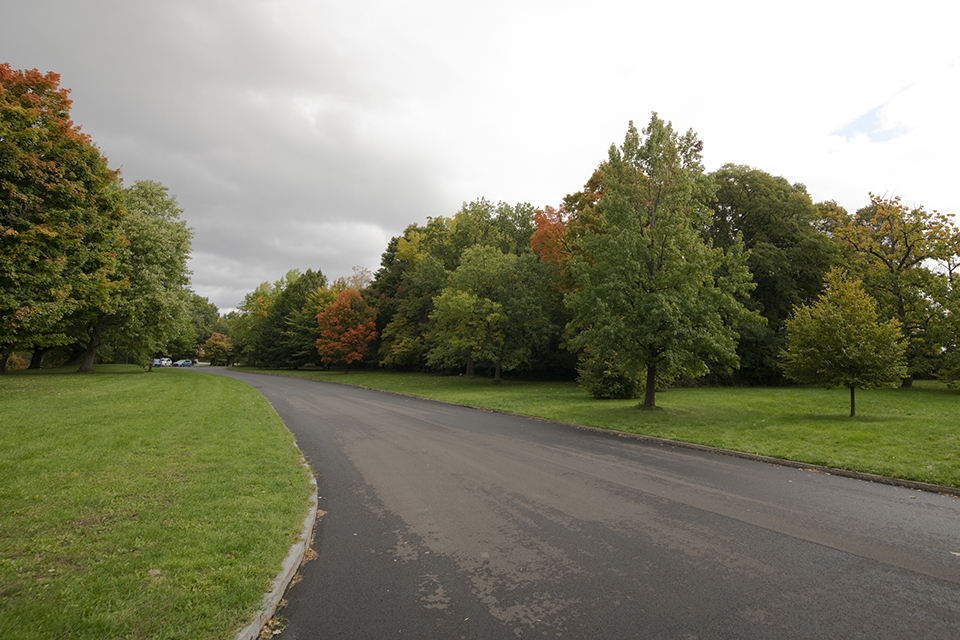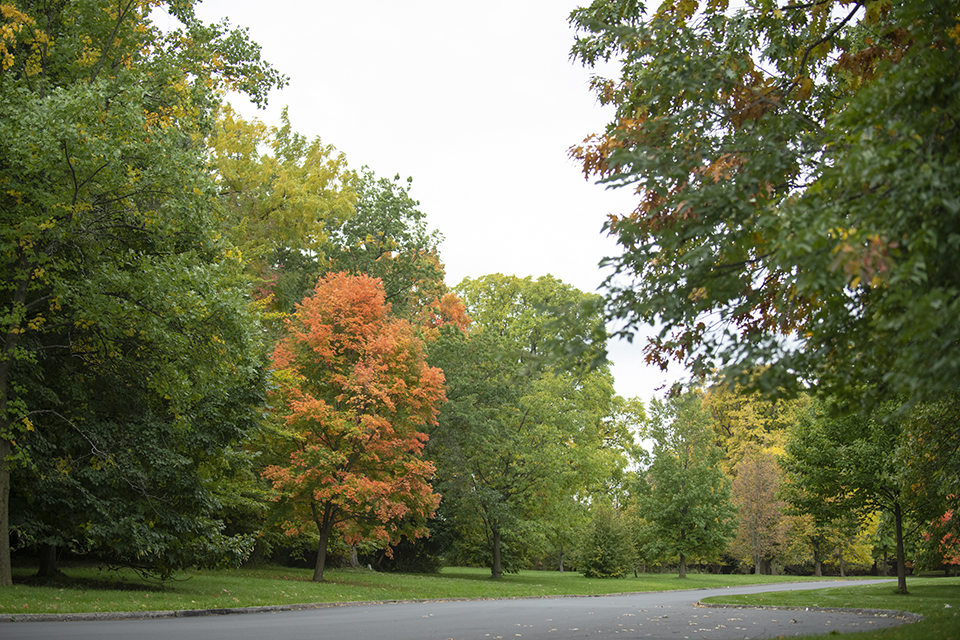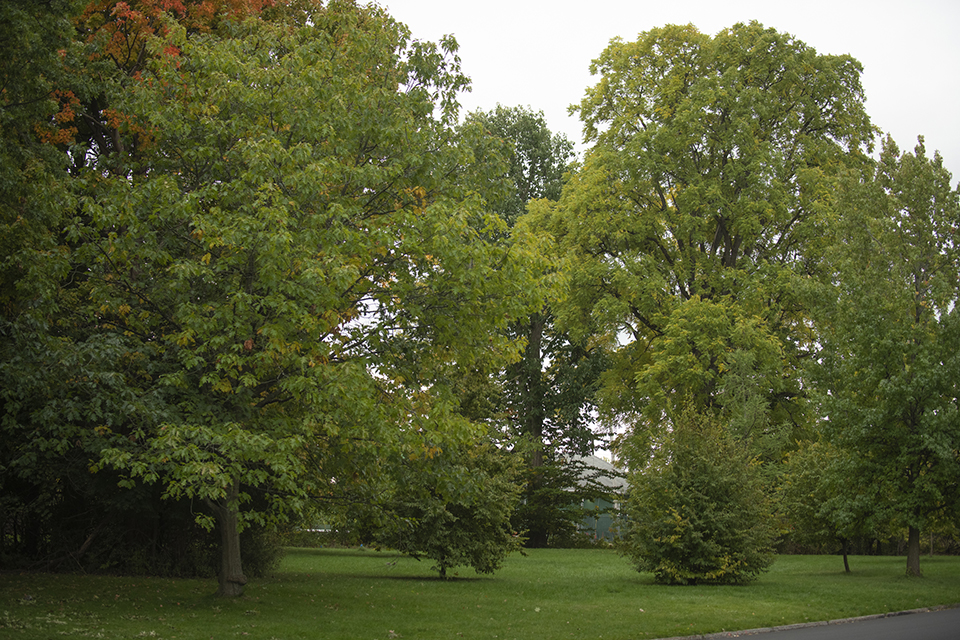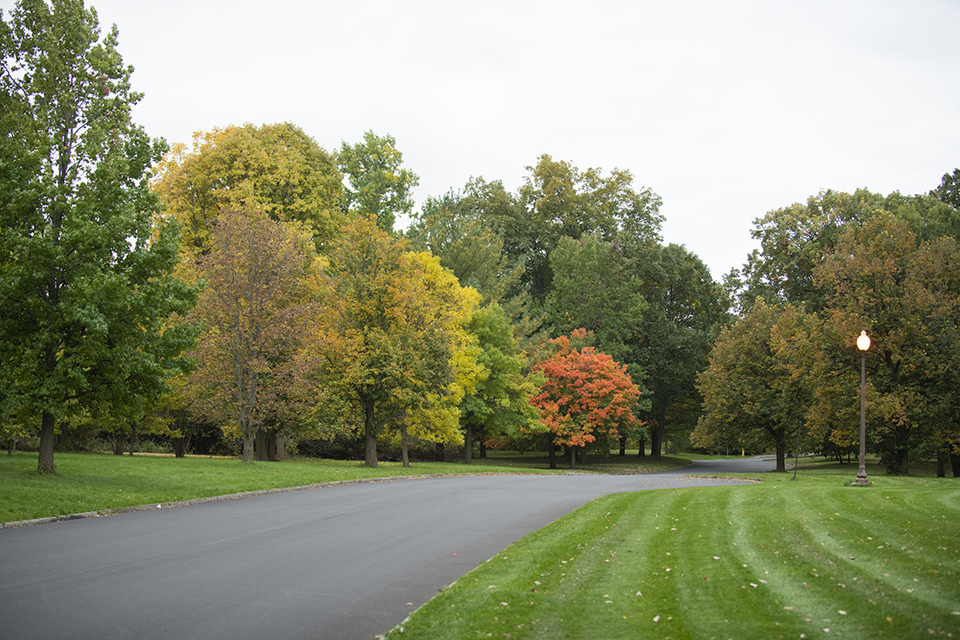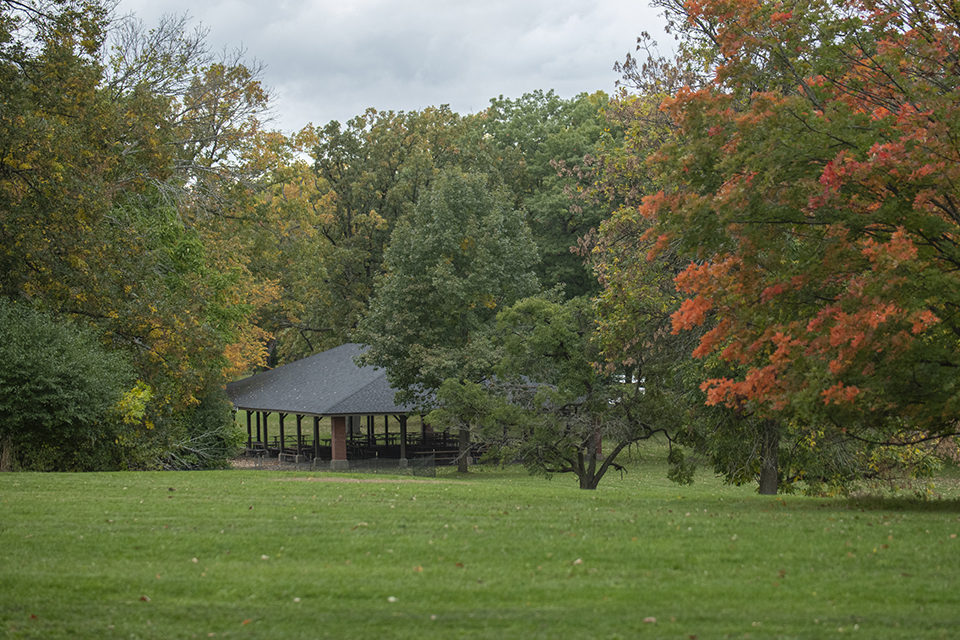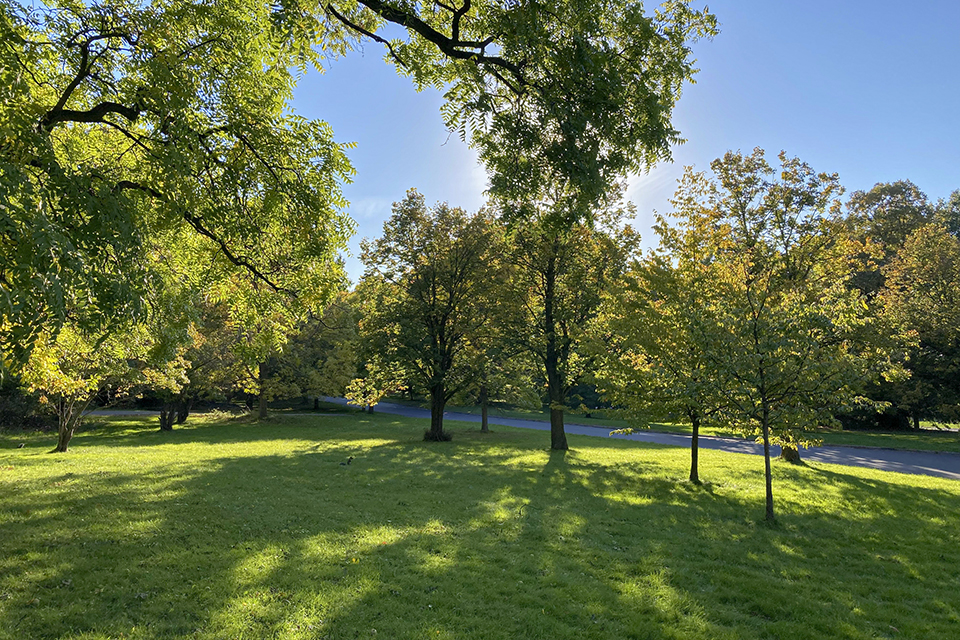One of the major parks within the Rochester Park System, one of only two metropolitan park systems designed and planned by all three Olmsteds, Genesee Valley Park is managed in part by the County, with its northeast quadrant now a part of the University of Rochester campus. With the university now seeking to redevelop 1.5 acres, the park’s scenic riverfront views are at risk of being lost.
History
Situated to the south of the historic core of the city of Rochester, amid rolling hillside on either side of the Genesee River, lies Genesee Valley Park, one of three major parks comprising the original Rochester Park System, designed by Frederick Law Olmsted, Sr., beginning in 1890.
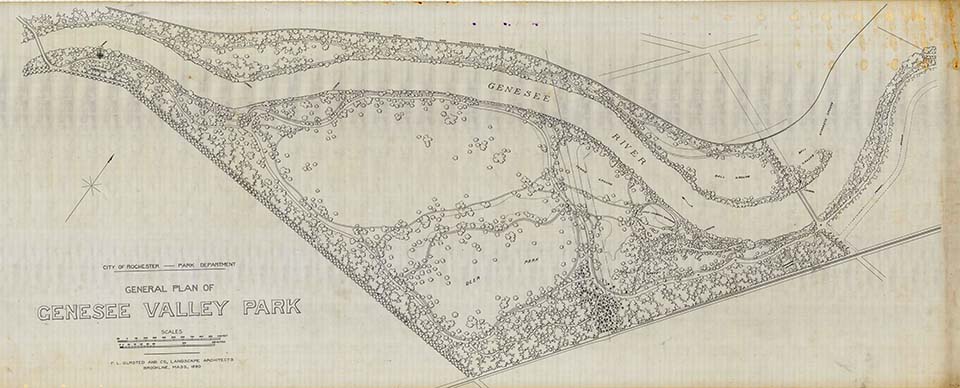 General Plan of Genesee Valley Park, Rochester, New York, 1890, Image courtesy of Frederick Law Olmsted National Historic Site.
General Plan of Genesee Valley Park, Rochester, New York, 1890, Image courtesy of Frederick Law Olmsted National Historic Site.
The provision of public space had long been a tradition in Rochester. The city’s initial growth at the turn of the nineteenth century was organized around several public squares that served as community gathering places, supplemented by the formation of additional squares following the routing of the Erie Canal through the city in the 1820s. Mount Hope Cemetery was established as the country’s first municipal cemetery in 1838 (just seven years after the nation’s first rural cemetery, Mount Auburn, was established in Cambridge, MA), and the University of Rochester was founded in 1850 and relocated in the 1920s to a larger, Olmsted Brothers-designed campus nestled in a bend in the Genesee River just north of Genesee Valley Park and west of the cemetery. Taken together, these diverse open spaces contribute to Rochester’s legacy as a city of rich cultural landscape history.
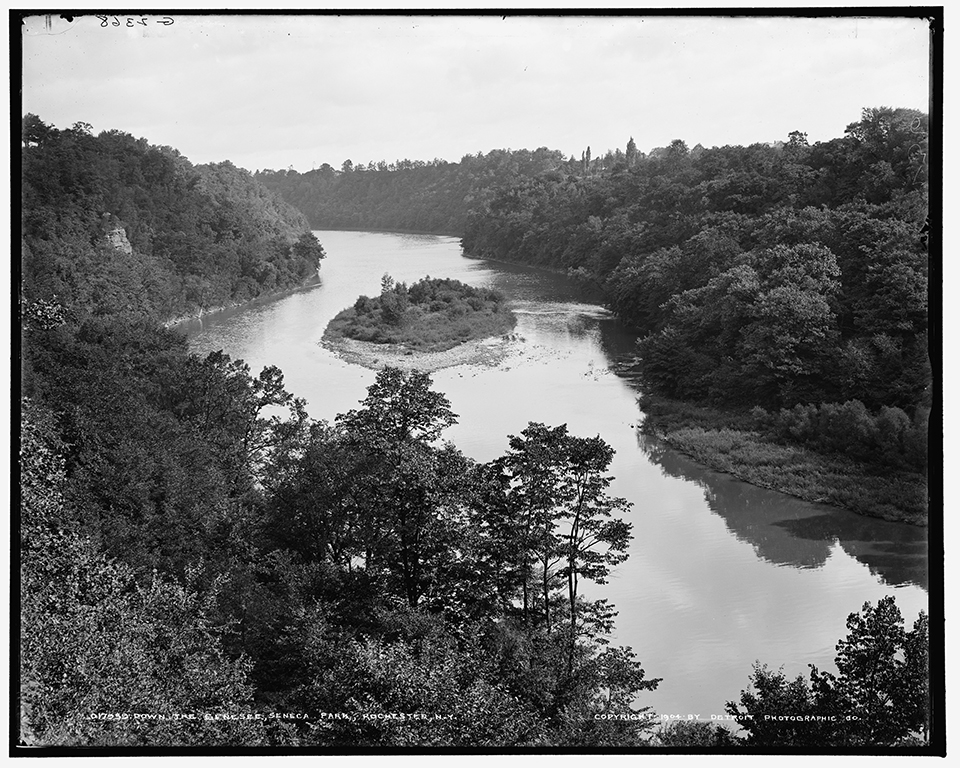 Seneca Park, Rochester, New York, c1904, Photo by Detroit Publishing Co. Courtesy of Library of Congress.
Seneca Park, Rochester, New York, c1904, Photo by Detroit Publishing Co. Courtesy of Library of Congress.
By the 1880s, the desire for ample public parks, comparable to those being established in other cities (including Olmsted’s Park and Parkway System for Buffalo, Rochester’s neighbor to the west), inspired several local landowners to donate property for the purpose, culminating in the establishment of a Board of Park Commissioners in 1888. Following proposals from five of the country’s prominent designers, including Frederick Law Olmsted, Sr.’s, former partner Calvert Vaux, the Olmsted firm was selected to lead the development of a robust park system for the city. After Olmsted, Sr.’s, retirement in 1895, the Olmsted Brothers firm continued on as consultants to the Board. This relationship would last until 1915, when the independent Board of Park Commissioners was dissolved and replaced by a city parks department.
Highland, Seneca, and Genesee Valley Parks comprise the original three anchors for Olmsted’s system, which collectively capture and showcase some of the region’s major distinctive natural landscape typologies: glacial moraine, river bluffs, and rolling countryside, respectively.
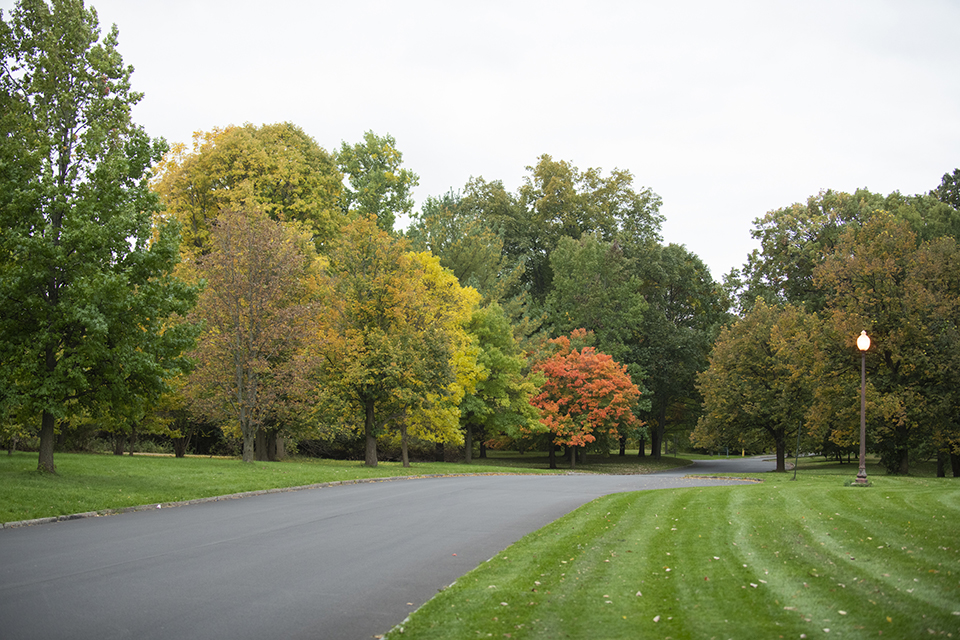 Genesee Valley Park, Rochester, New York. Photo by Jamie Ratchford, 2022.
Genesee Valley Park, Rochester, New York. Photo by Jamie Ratchford, 2022.
At its current 800+ acres, Genesee Valley Park is the largest of the three by nearly three-fold (compared to Highland Park’s 293 acres and Seneca’s 325 acres), and was designed as a rolling, pastoral park on both sides of a broad, curving section of the Genesee River, with the majority of park acreage sited on the eastern bank. Initially called “South Park,” the site’s original 543 acres were selected to provide public access to the river while also preserving the area from encroaching development. Between 1889 and 1898, 62,500 trees were planted along a bordering railroad line and the adjacent Westfall Road, while shrubs and willows were embedded along the park’s riverbanks and within the woods. During this time, John Charles Olmsted oversaw the placement of recreational facilities, including a golf course that supplanted a former meadow. A donation of 120 acres expanded the park in 1908.
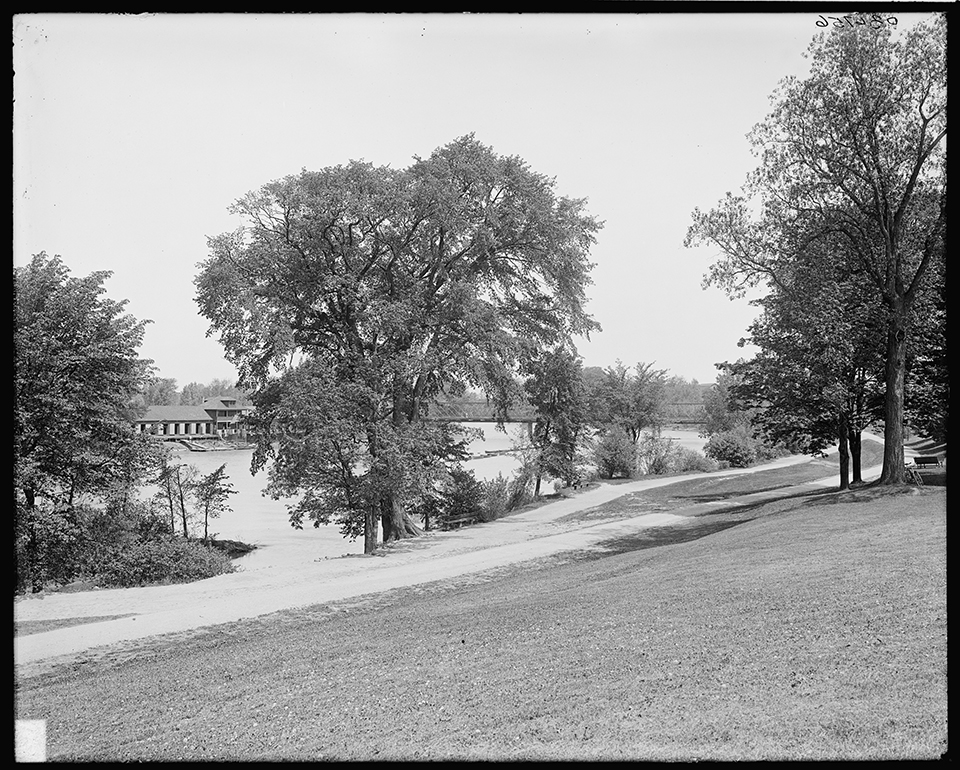 Genesee Valley Park, Rochester, New York. Photo by Detroit Publishing Co. Courtesy of Library of Congress.
Genesee Valley Park, Rochester, New York. Photo by Detroit Publishing Co. Courtesy of Library of Congress.
With construction of the New York State Barge Canal from 1905-1918, crossing the Genesee River at grade via a four-way intersection, the park was divided into four quadrants, linked by arched pedestrian bow bridges designed by Olmsted Brothers to mitigate the disruption to the site; Interstate Highway 390 crosses through a section of the park adjacent to the canal on its south side, further defining the quadrants. The northeast and southeast quadrants of the park are the largest areas of parkland, retaining integrity of the Olmsted design with their woodland buffer edges, rolling lawn with mature shade trees, curving drives, and waterfront pathways.
Genesee Valley Park remains an important cultural, ecological, historic, scenic, and recreational asset for the community, as a largely intact landscape designed by Frederick Law Olmsted, Sr., and several iterations of his firm and its successors. The park also serves as a popular fishing and boating destination for the city to this day and provides additional opportunities for active recreation via its bike paths, hiking and cross-country ski trails with river and canal vistas, various sporting fields, and two golf courses, plus ample space for picnicking and other passive uses. Genesee Valley Park is situated within the Erie Canalway National Heritage Corridor, a National Historic Landmark, and in 2009 was determined eligible for listing as a contributing feature of the Municipal Park System of Rochester, but to date, only Seneca Park East and West have been formally listed.
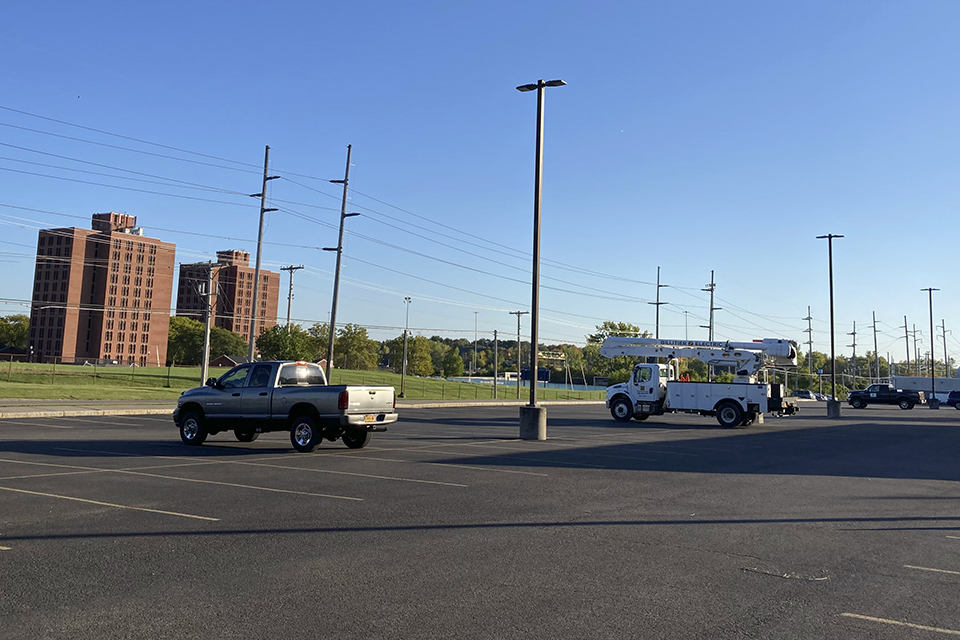
Photo by Jamie Ratchford, 2022.
Threat
Genesee Valley Park is managed in part by the County, while the City of Rochester Parks Department maintains the sections west of the Genesee River. In 1969 ownership of a portion of the northeast quadrant of the park was conveyed to the University of Rochester for the expansion of its campus, creating a separate parcel along Elmwood Avenue. This land currently remains a mature woodland buffer adjacent to the public park drive, the main entry to the park, and abutting the current south edge of the University of Rochester (its campus incidentally also designed by the Olmsted firm). A 1927 statue of Edward Mott Moore, former president of the board of trustees of the University of Rochester and first president of the Rochester Park Commission—a staunch advocate for the establishment of the park system—is sited within these grounds.
The university is now proposing to clear more than an acre-and-a-half of this historic, Olmsted-designed wooded area of the park to build a warehouse, with proposals indicating that the structure and its accompanying paved lot will cover some 40,000 square feet and stand at 25 feet high. The project would result in severe detriment to scenic viewsheds from a number of crucial vantage points, including from and across the river, not to mention the forfeiture of significant mature specimen trees. If fulfilled, this or a similar proposal would be in direct opposition to the four key goals of the New York State Department of Environmental Conservation’s Forest Action Plan, established in 2020, and two in particular: “Keep New York’s Forests as Forests” and “Appreciate, Support, and Protect New York’s Forests.” The Action Plan is a critical component of NY State’s climate change mitigation initiatives.
The City of Rochester has denied the university's initial application for Certificate of Zoning Compliance based on the proposed use and the current zoning. However, the site remains zoned for “expansion of academic facilities” and, if this proposal does not pass, the university will likely pursue other similar routes to demolition of woodland and subsequent incompatible construction.
Though Genesee Valley Park does not have its own dedicated friends or advocacy group, the Rochester Olmsted Parks Alliance—composed of several preservation, environmental, other neighborhood groups—has written to the University to encourage its stewardship of the site. However, at time of publication there has been no response to this request.
What You Can Do to Help
Contact University of Rochester president Sarah Mangelsdorf to request that the school protects the integrity of the site as a woodland buffer:
240 Wallis Hall
University of Rochester
Rochester, NY 14627
Phone: 585-275-8356
E: thepresidentsoffice@rochester.edu
Contact the City of Rochester zoning manager, Roseanne Khaleel, to insist that the zoning regulations be reformed to protect this site, or that it be returned to public ownership and preserved as parkland.
P: 585-428-6914
E: Roseanne.Khaleel@CityofRochester.Gov
Contact the Deputy Commissioner of NY Division for Historic Preservation, Daniel Mackay, asking to pursue National Register designation for Genesee Valley Park, which has already been determined to meet the criteria for listing as part of a broader Statement of Significance & Eligibility Evaluation prepared for the Multiple Property Documentation for the Municipal Park System of Rochester.
Support the Preservation League of New York, who has listed the park on its 2022 List of Seven to Save, in raising awareness of the issue. You can donate to the League, indicating that you would like the funds earmarked for the preservation of Genesee Valley Park.
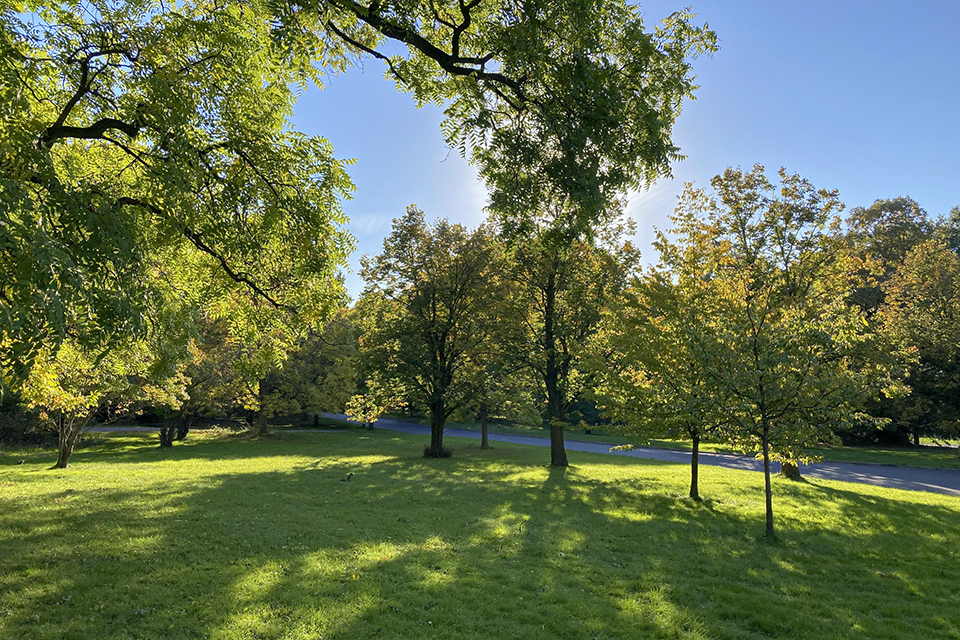
-
Photo by Jamie Ratchford, 2022.
